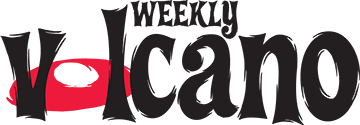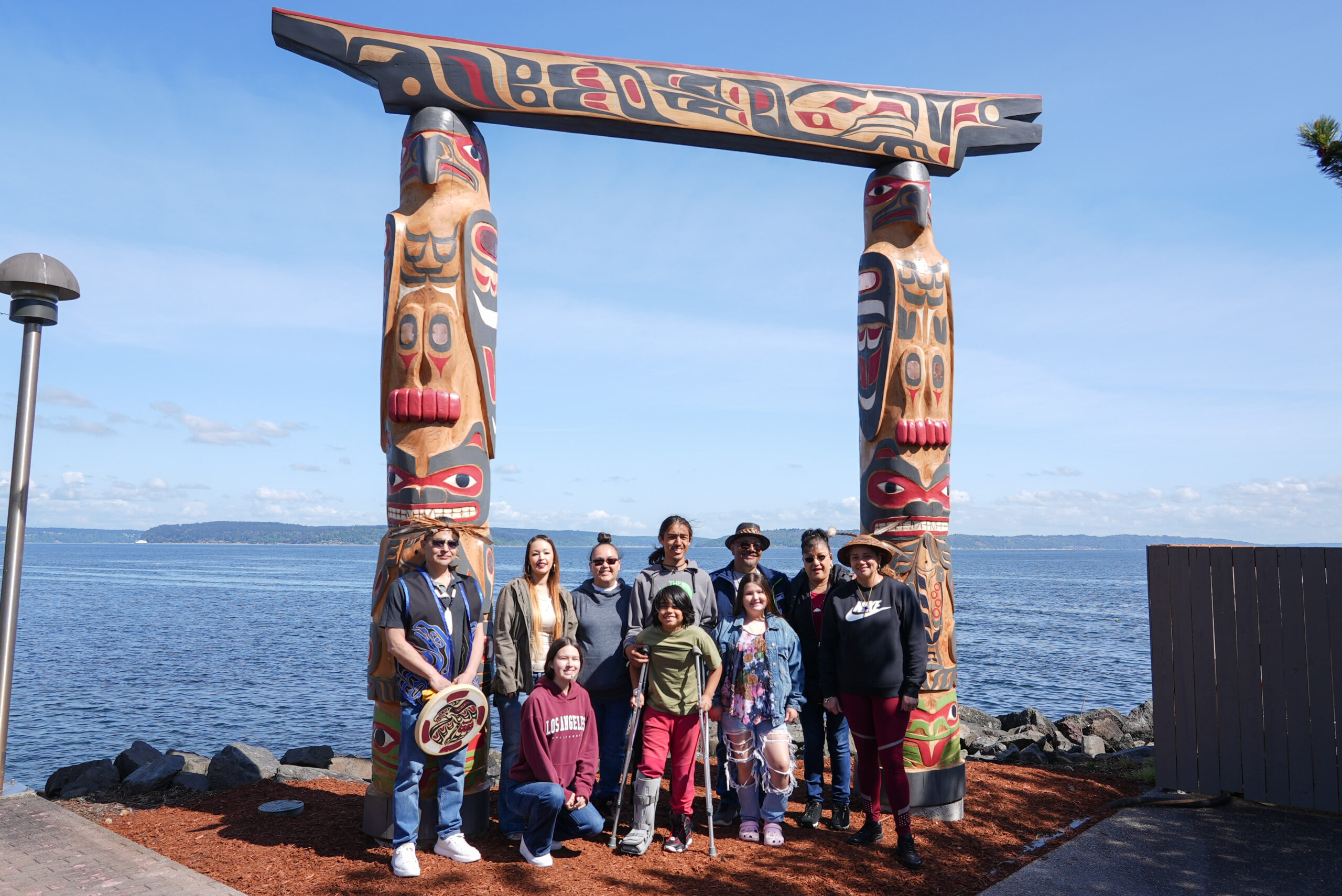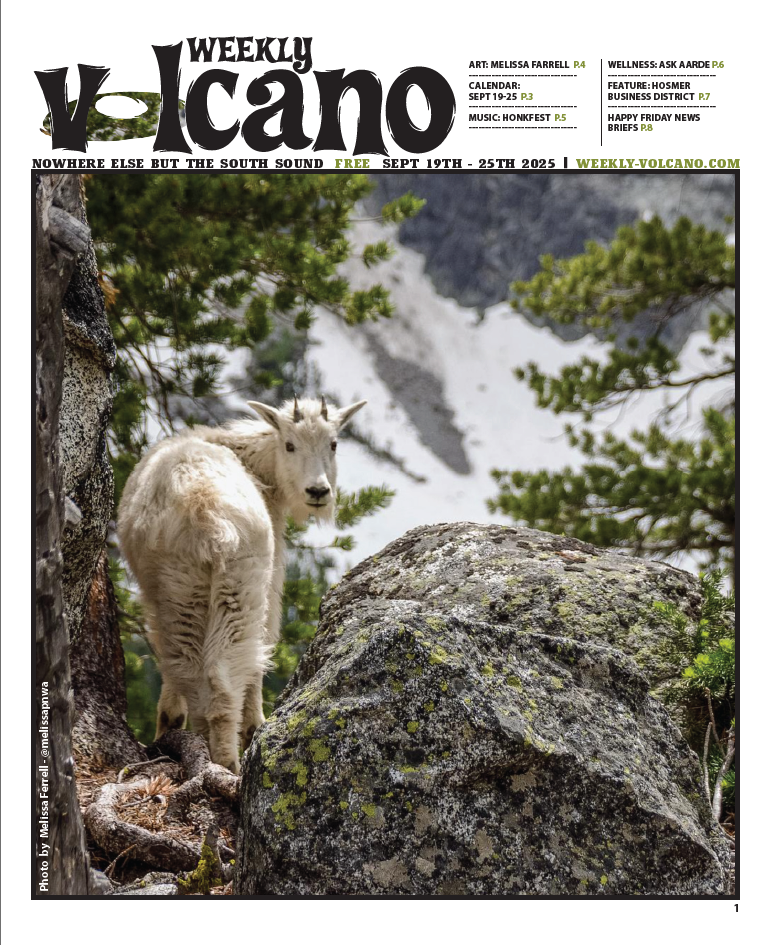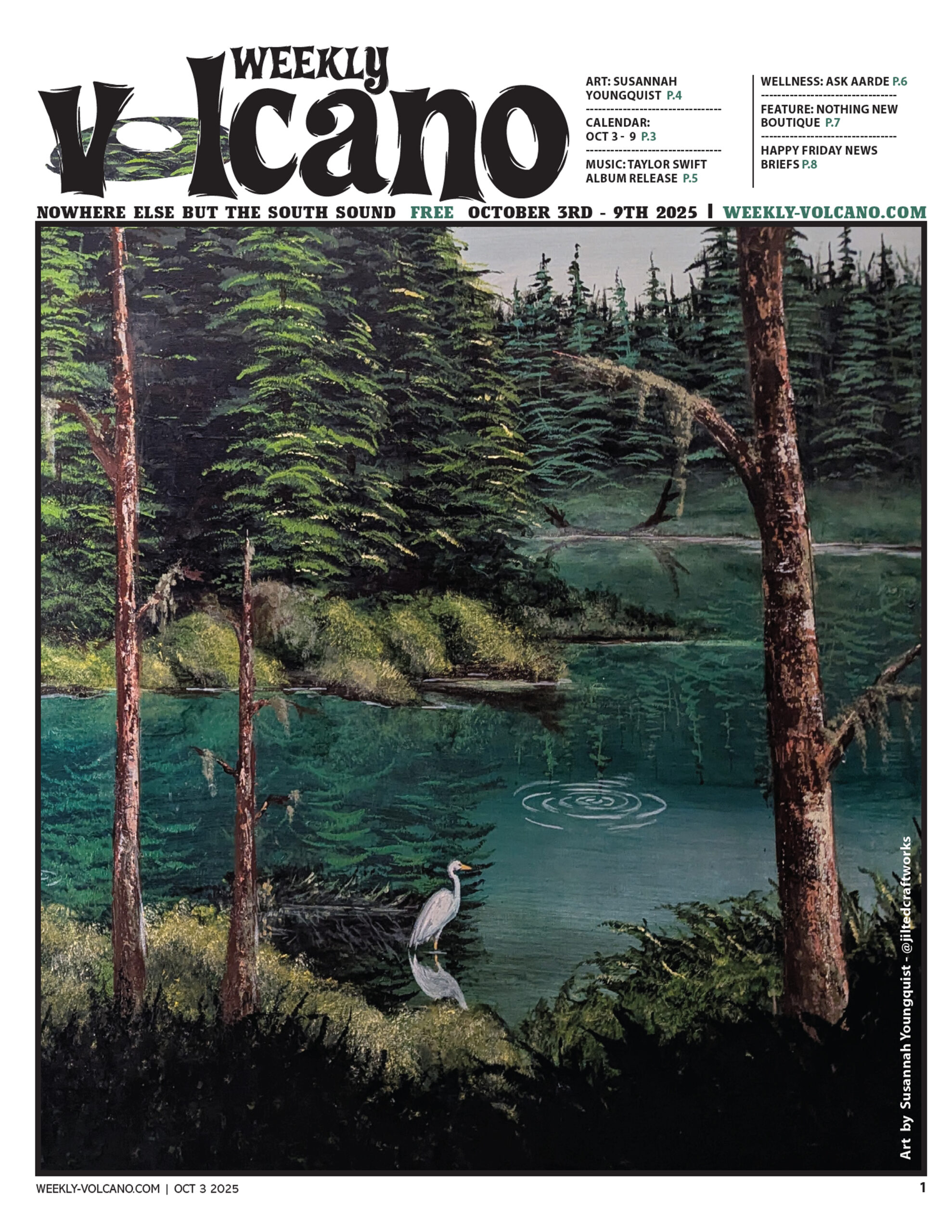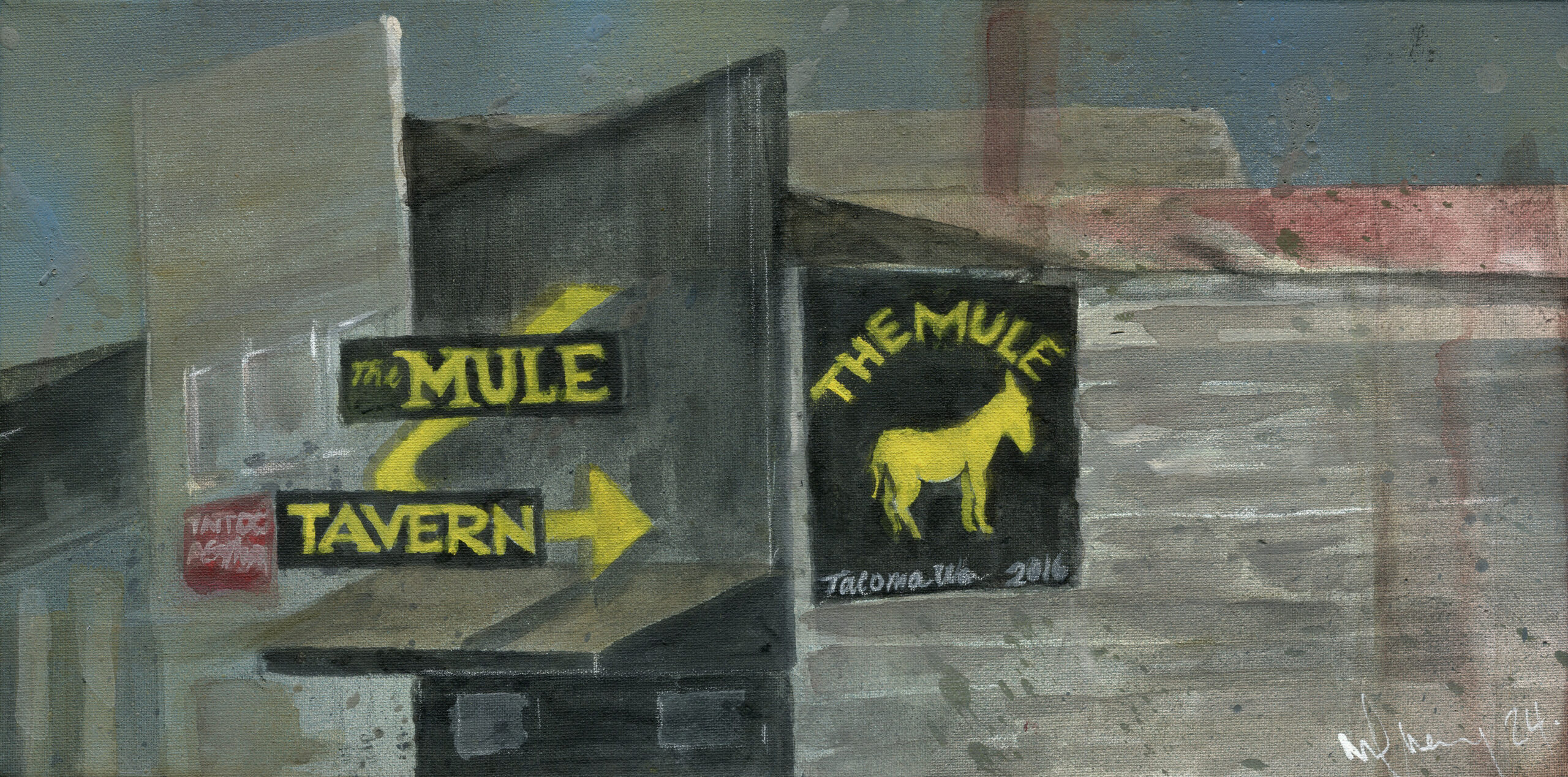BY SUZY STUMP for WEEKLY VOLCANO 5/16/25 |
A gentle wind lifted the morning mist along the Ruston Way waterline, where members of the Puyallup Tribe and their guests gathered on May 8th, 2025 to unveil a powerful new art installation: a traditional Story Pole archway. Flanked by Woven Seafood & Chophouse and the Kenmore Air terminal, this landmark isn’t just a visual marvel—it’s a spiritual one, standing on reclaimed trust land that once teemed with ancestral life.
“This is a really important day,” said Puyallup Tribal Chairman Bill Sterud at the unveiling. “In a way, it’s a claiming—a claiming of our ancestral lands… This was our world. Then it got invaded. But we’re bringing our people, our families, and our land slowly back together.”
What now stands in this sacred place is a three-part totemic structure officially titled the Fisherman’s Memorial. Designed by Nicholas Earl Sr. (Puyallup Tribal Artist) and Micah McCarty (Tribal Artist), it tells a story that moves through seasons, generations, and realms—honoring water, spirit, and stewardship.
At the base of each 16-foot pole is a frog, representing clean water. A bear, feasting on salmon, stands next, while the Thunderbird—a figure of power and protection—watches from the top. At the peak, a canoe points toward the water, carrying the traditions of ancestors forward.
“The story—all of the symbols too—came first,” said carver Nicholas Earl Sr. “We talked with the Tribal Council and they had a vision. We used to fish there back in the ’50s. It was a good, good start.”
Earl worked alongside fellow carver Micah McCarty and their sons, teaching them to carve and paint throughout the year-long process. “We’re trying to teach our sons how we carve,” he said. “It went well with our boys.”
The use of cedar trees was both practical and spiritual. “Cedar is good for all nations,” Earl said. “It’s what we used for baskets and clothing and all our tools… It was the number one wood that everybody carved with.”
As the pole rose into the sky, so did its symbolism. The inclusion of both male and female figures was deliberate, with each pole carrying a gendered counterpart—balancing the sacred energies.
“Both men and women are a part of our culture and our art,” Earl said. “So we wanted to make sure both were part of that totem pole.”
The canoe at the top also speaks to modern transformation. “We use the canoe for traveling,” he said. “The plane was like a traveling source too, but by air… so we figured the canoe would be the water traveling, but in the air, too.”
The artistic team included copper inlays representing wealth—not in dollars, but in connection: to land, people, and purpose.
“That copper represents the wealth of connection to who we are, where we come from, and the wealth that feeds us,” said Micah McCarty during the unveiling.
The significance of the site itself—once a thriving tribal village—added emotional weight for the artists.
“It was very, very powerful, and it made my energy feel good to bring it back to the people,” Earl said of carving the pole and placing it on reclaimed land. He described feeling the presence of ancestors during the process. “We always say a prayer over the log… and say a prayer for all the ancestors that will be helping us. The spirits will come down and help us carve.”
Earl recalled one especially moving moment: “Moving it onto the trailer and coming this way with it… I think the ancestors were standing over watching us. That’s what really got to me.”
“We didn’t realize until later that the design was symbolic of a memorial,” said Micah McCarty. “A memorial to those who came before us, who fought so hard for this land.”
Carved through the spring, summer, fall, and winter, and finally raised again in spring, the work reflects the cycle of seasons and ancestral time.
“We spent all year carving on it,” said Earl, who traveled every weekend from Tacoma to Olympia to work on the piece. “It’s really all through the year.”
Each element holds its own weight. The frog symbolizes the health of the water and environment. The Thunderbird reminds us to protect and care for the natural world. Together, the bear and salmon reflect the deep connection between the people and the natural foods that have supported their way of life for generations. Even the choice to depict a male and female fish honors balance.
As for longevity, this monument is built to last. “It could last up to 100 years,” said Earl. “It depends on the log and how it was treated. The salt water cures that cedar… up in Alaska, those poles can stand for hundreds of years.”
Fifty bags of concrete support the base, but the structure is bolted to a central metal beam for extra wind resistance which could theoretically survive hurricane strength winds.
And yet, the work isn’t over. “We have more stories to tell,” said Connie McCloud, Heritage Division Manager for the Puyallup Tribe. “Our children will come forward and add to these poles.”
Nicholas Earl Sr. hinted at a new project already in the works. “I do have another pole going up,” he said, “but I can’t tell where at the moment. It’s a secret.”
As the poles stand tall beside the waters of Tacoma, they do more than mark territory—they breathe.
“This is the living breath of who we are,” said Micah McCarty. “When we sing our songs, share our breath, share our presence—that is medicine.”


